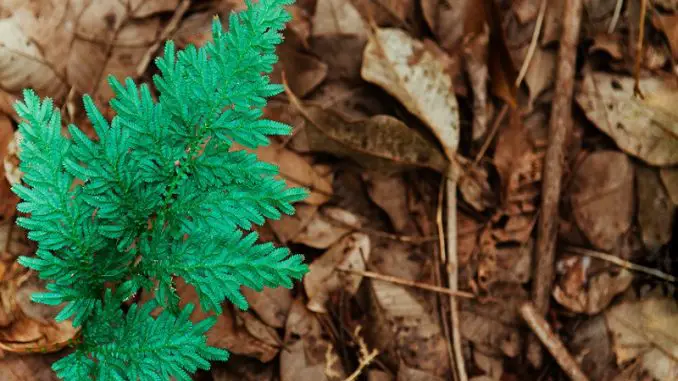
Some plants are terrestrial, others are aquatic, but a few blur the line in between. Peacock Fern is a species that likes to live right next to freshwater but doesn’t like to be in it.
For this reason, it is a sought-after plant for terrariums or paludariums where humidity is high, but the plants can stay out of the water.
If you are searching for a plant to fill these kinds of environments, Peacock Fern is definitely worth investigating. It is a vibrant and beautiful plant.
This guide will help you get to grips with Peacock Fern. We will cover everything you might need to know when caring for this species.
Peacock Fern Facts & Overview
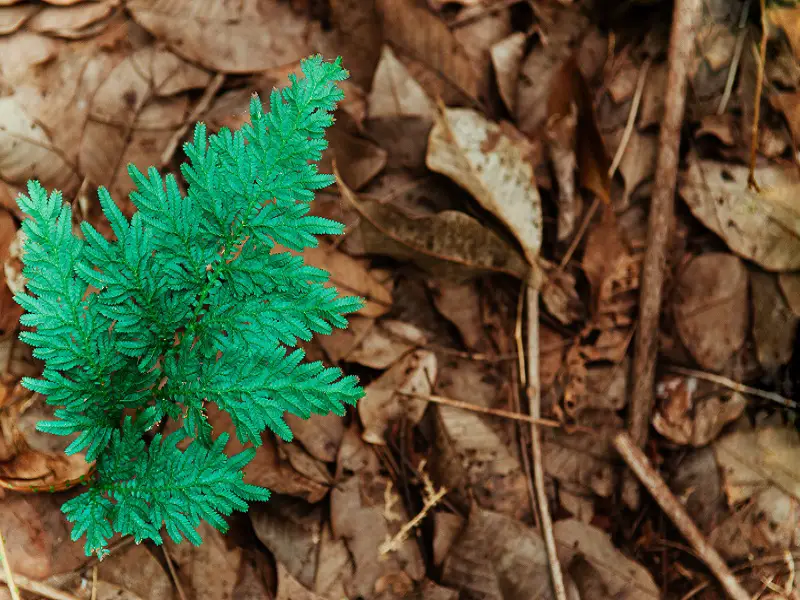
| Category | Rating |
| Care Level: | Medium |
| Lighting: | Low-medium |
| Color Form: | Green |
| Origin: | China |
| Height: | 6-10 inches |
| Family: | Selaginellaceae |
| Minimum Tank Size: | 10 gallons |
| Tank Set-Up: | Terrarium or paludarium |
| Growth Rate: | Slow |
Peacock Fern isn’t actually a fern, it is moss.
This is why the plant is also known as Blue Spikemoss and Peacock Spikemoss. The scientific name is Selaginella uncinata. It is a species in the Selaginellaceae family.
This plant is originally from China, where it lives on the fringes of freshwater bodies like rivers. This plant shouldn’t be fully submerged, so it is best suited for a terrarium or paludarium.
In the right environment, Peacock Fern is easy to grow, so it is a great choice for anyone who hasn’t started a plant-based setup before.
It can be bought very cheaply, but look carefully for signs of poor health before purchasing, as a loss of color or damaged leaves.
Appearance
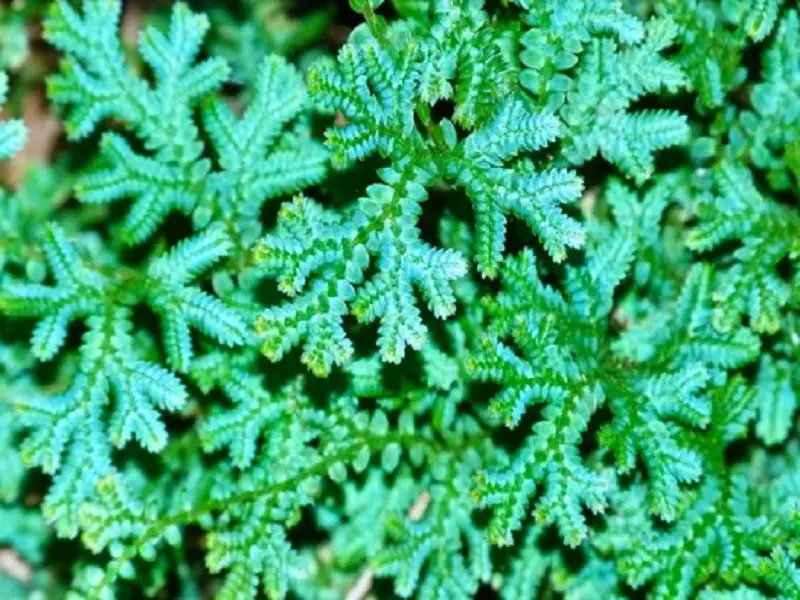
This is a cute species that reaches between 6 and 10 inches. The growth will be horizontal; it stays low, close to the substrate, growing outwards.
As it grows, this moss will spread to form diffuse mats. Some people grow Peacock Fern in hanging baskets, so the plant hangs down like vines.
The leaves branch out from a central stem. They are finely detailed, with the edges looking like they have been cut to a particular design.
It is primarily a green species but sometimes the leaves look blue or purple depending on the angle you look at them from, and the lighting they are under.
The stems can have the same effect, varying from green to blue to brown.
Tank Conditions
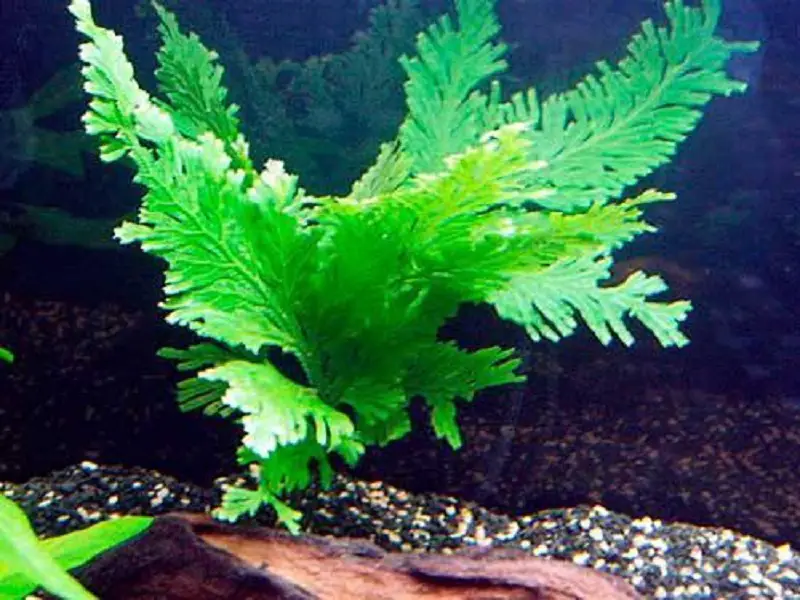
As we have mentioned, Peacock Fern shouldn’t be fully submerged, so add it to terrariums or paludariums instead of aquariums.
In a paludarium, ensure at least all the leaves are out of the water.
There are a few conditions that need controlling to keep Peacock Fern healthy. It needs low-medium light, high humidity, and a moist substrate.
Soil is the best substrate, but other fine-grained substrates are suitable too. Make sure there are no large stones or other materials buried within that might reduce growth.
Add a small amount of fertilizer when preparing the substrate. This will provide important nutrients for the roots to absorb.
Try to maintain mildly acidic or neutral conditions.
The light should be artificial. Direct sunlight is too powerful and will likely cause the plant to wilt and die. Keep tanks away from windows where sunlight might hit them.
Peacock Fern should be sat in shade for most of the day, around 4 hours of light will do, though this might need reducing further in warm summer months.
Controlling temperature with a heater is a good idea. Try to keep this around 65°F.
This species doesn’t need too much space, so you can keep it tanks 10 gallons or even less. It is often potted instead of using a tank.
Care
Peacock Fern can be a bit sensitive, but this shouldn’t put you off; the plant will thrive if you can maintain healthy conditions.
Regularly adding fertilizer to the top of the substrate will help growth, do this every couple of weeks.
If you need to move the plant, be careful not to damage the roots. This is easily done because the roots spread wide in the substrate. Any damage will make it difficult for the plant to re-establish itself.
Peacock fern grows slowly, so it will take a while to recover from any damage it receives.
Direct sunlight is a common cause of death, but a moist substrate is important too.
It needs regular watering, especially in the summer when temperatures are high. In winter you can reduce this, but never allow the soil to dry out.
As it grows, Peacock Fern will spread outwards, increasing its coverage of the substrate. This will require pruning, depending on how much space you have for it to grow into.
Propagation
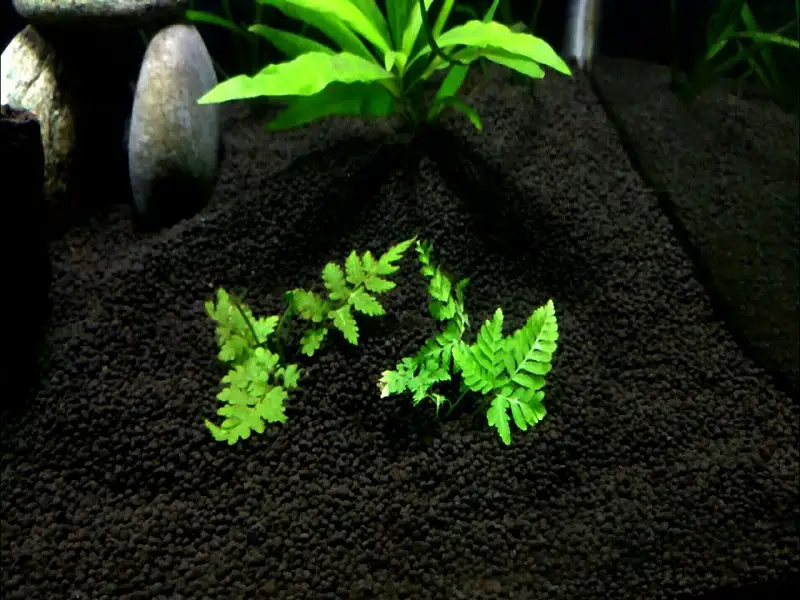
If you have a large and established mat of Peacock Fern, you can propagate it by dividing the mat and moving parts elsewhere. These will then begin growing into their own large mat.
You can also propagate using stem cuttings. Cut off parts of the stem where new roots have developed to start a whole new mate.
Place the cuttings into nutrient-rich soil to help them to establish themselves in their new location.
Be careful not to damage the roots when moving parts of your Peacock Fern.
Propagation can take a while because Peacock Fern grows so slowly, so you’ll need to be patient.
Is Peacock Fern Suitable for You?
As long as you have done your research, there is no reason why you can’t keep Peacock Fern.
Some people buy it thinking that they can add it to their aquarium, later realizing this was a fatal error. Submerging it in water is never a good idea.
It will thrive in a well-watered, humid environment with small doses of artificial light. With some pruning and some fertilizer, even beginners will be able to look after this terrarium species.
Peacock Fern is a beautiful species with bright colors and intricate leaves that create an excellent textured pattern on the substrate.
What kind of setup do you keep Peacock Fern in? Let us know in the comments below…

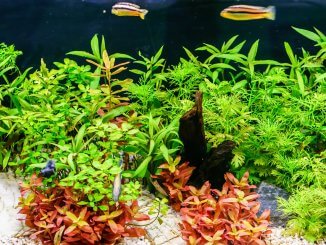
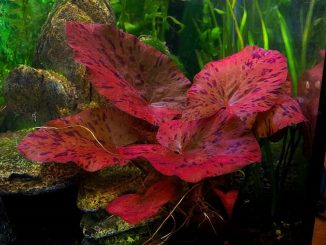


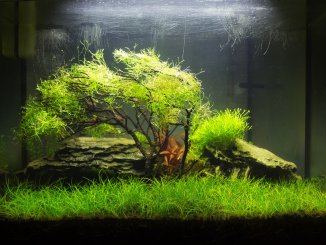

Be the first to comment